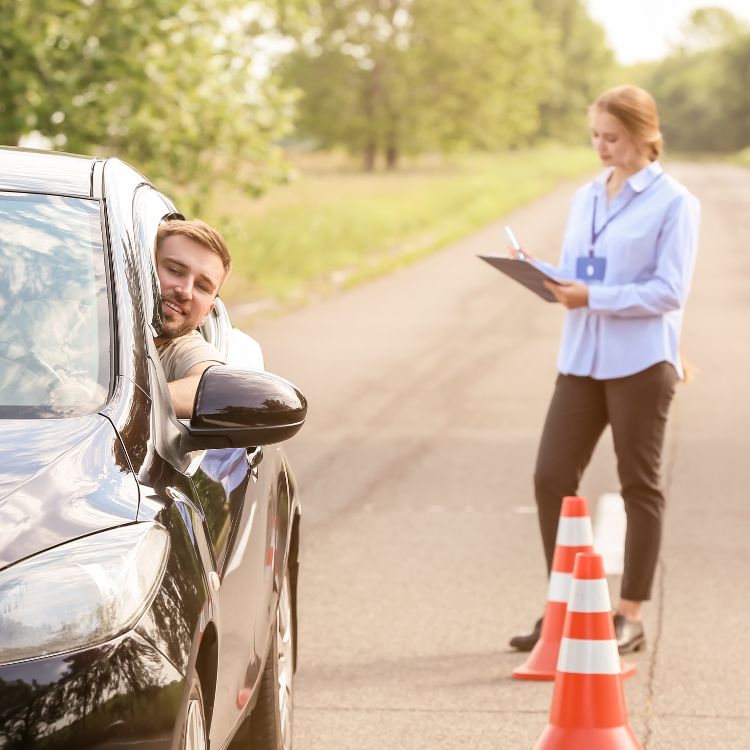EMPOWER AUSTRALIAN YOUTH TO STAY SAFE WITH DRIVER SAFETY TRAINING
Educating Australian youth on driver safety is important and promoting responsible driving habits through driver safety training programs is a great starting point.
Why Australian Youth Need To Practice Safe Driving Skills
In 2023, the 40-64 age group saw the highest fatalities due to road crashes, but the 17-25 group was a close second accounting for 22% of total driver fatalities in Australia (Drive.com.au 2024). These figures speak to the importance of mastering safe driving skills and practices that not only protect young drivers but also passengers, pedestrians, and other road users.
By prioritising road safety, young drivers contribute to preventing road crashes. One of the ways to make sure that young driver's safety is a priority is to convey the importance and road safety for better outcomes.
Why Driver Safety Training For Australian Youth Needs To Be Prioritised
The annual road fatality rate for 15-24-year-olds is 50% higher than for other age groups globally (Road Sense Australia 2023)
Road traffic crashes account for 45% of all young Australian injuries and deaths (Young Driver Factbase)
People aged 20 to 24 account for 16% of fatalities and 16% of serious injuries in South Australia annually (Department for Infrastructure and Transport - South Australia)
Why Australian Youth Need To Practice Safe Driving Skills
Safety training for young Australian drivers ensures safe road practices and reduces crashes. By equipping young drivers with essential skills, knowledge, and a sense of responsibility, these programs play a crucial role in promoting road safety and subsequently preventing fatalities.

Reducing Road Crashes
Safety training equips young Australian drivers with essential skills and knowledge to navigate roads safely. By learning defensive driving techniques, understanding road signs, and practising responsible behaviour behind the wheel, young drivers can significantly reduce the likelihood of crashes, thus promoting road safety for themselves and others.

Preventing Fatalities
Australia sees a significant number of road fatalities involving young drivers each year. Safety training addresses risky behaviours like speeding, drunk driving, and distractions, which are common contributors to fatal accidents among youth. Instilling the importance of safe driving practices early on helps prevent unnecessary loss of life on the roads.

Complying With Regulations
Safety training ensures that Australian youth are aware of and compliant with road regulations and laws. Understanding traffic rules, licensing requirements, and consequences for violations is essential for young drivers to navigate the legal aspects of driving responsibly. Compliance with regulations also contributes to overall road traffic management.

Promoting Responsibility
Engaging in safety training fosters a culture of responsibility and accountability among young Australian drivers. By emphasising the impact of their actions on themselves and others, these programs encourage young drivers to prioritise road safety. Promoting a culture where safe driving is valued and respected helps create a safer community for everyone.
What Our Community Says About Us
Our Partners





Partner With Youthsafe For Better Young Driver Safety
At Youthsafe, our mission is to make sure that every young individual possesses the resources necessary to lead happy, safe, and fulfilling lives.
To achieve this, we concentrate on the four settings where young individuals are at higher risk of injury: travelling on roads, during work activities, participating in sports, and socialising with friends. We offer several programs and resources tailored for parents, supervisors, coaches, and youth to ensure safety is a priority in these environments.
FAQs
You can enrol in driver safety training programs through accredited driving schools, community organisations, or online platforms that offer specialised courses for young drivers. Additionally, some schools and youth organisations may provide driver safety education as part of their curriculum or extracurricular activities.
Staying updated on road rules and regulations is essential for young drivers in Australia. You can stay informed by regularly reviewing the latest editions of the road rules handbook provided by your state or territory's transport authority, participating in refresher courses or workshops offered by driving schools, and accessing online resources such as government or community organisations' websites dedicated to road safety.
Additionally, staying attentive to road signs and signals while driving and seeking clarification from experienced drivers or authorities when in doubt can also help you better understand and adhere to road rules and regulations.


